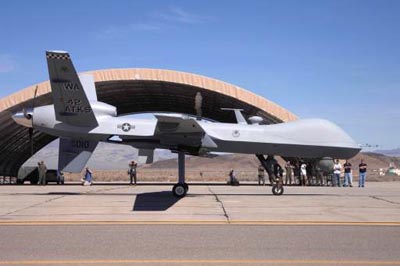Air Com bat Command chief Gen. Ronald Keys, plugging the Air Force’s push to be executive agent for all the Pentagon’s high-flying unmanned aerial vehicles, said there’s “no good reason” why the sensors on Army and Air Force UAVs should be different, since they feed a common network that mostly wants the same kind of information. Having different sensors is just one of the elements that USAF leaders believe add unnecessary development and support costs, he told reporters at a press conference at Bolling AFB, D.C., earlier this week. Keys also warned that unless one service—his—is in charge of orchestrating UAVs, midair collisions with manned aircraft and “frequency fratricide” of jamming each other’s communications is inevitable. The Army and friends, of course, take a different view.
bat Command chief Gen. Ronald Keys, plugging the Air Force’s push to be executive agent for all the Pentagon’s high-flying unmanned aerial vehicles, said there’s “no good reason” why the sensors on Army and Air Force UAVs should be different, since they feed a common network that mostly wants the same kind of information. Having different sensors is just one of the elements that USAF leaders believe add unnecessary development and support costs, he told reporters at a press conference at Bolling AFB, D.C., earlier this week. Keys also warned that unless one service—his—is in charge of orchestrating UAVs, midair collisions with manned aircraft and “frequency fratricide” of jamming each other’s communications is inevitable. The Army and friends, of course, take a different view.
The U.S. began extensive air and artillery strikes against Islamic State group targets in Syria on Dec. 19 in retaliation for the killing of three Americans on Dec. 13 by a gunman affiliated with ISIS, U.S. officials said.

